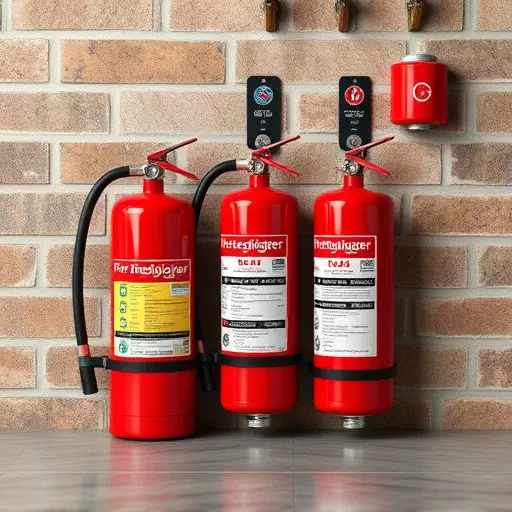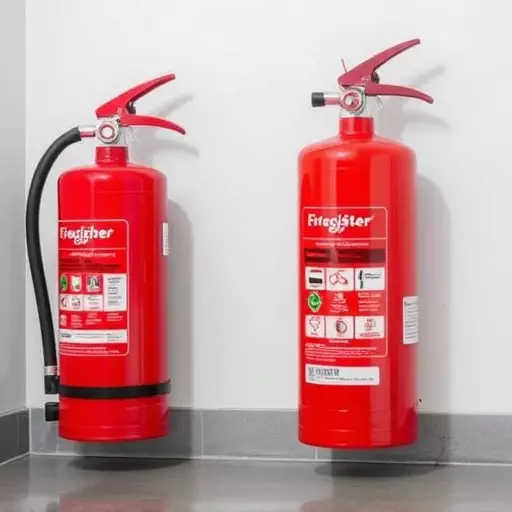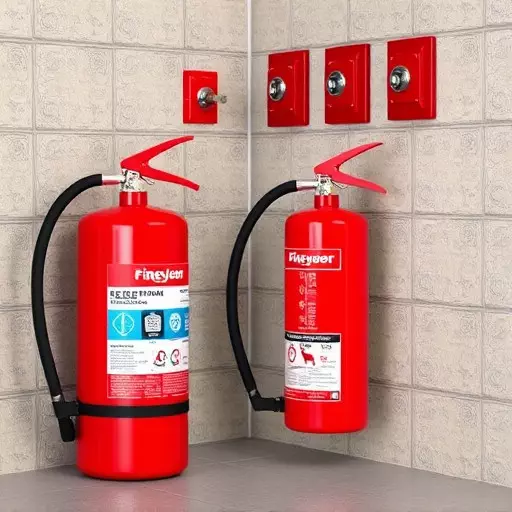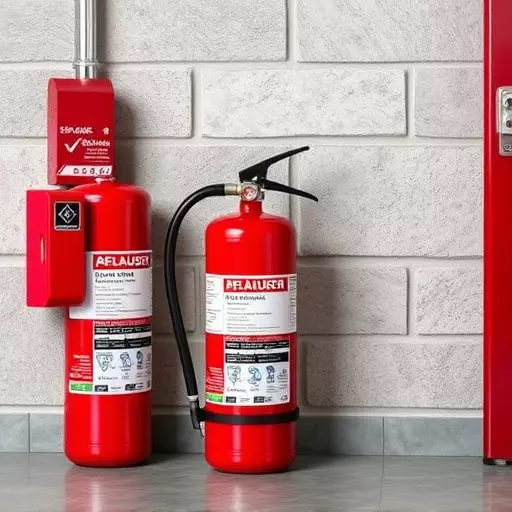Fire extinguisher installation is a safety critical task requiring professional expertise in both residential and commercial settings. Residential installations focus on strategic accessibility while commercial settings demand specialized equipment tailored to unique risks and stringent codes. Licensed professionals consider layout, hazards, local regulations, and maintenance protocols for optimal functionality during emergencies. Regular maintenance, inspections, testing, servicing, and training are essential for compliance, safety, and preparedness, with tailored packages available from fire extinguisher installation services.
Fire extinguishers are vital safety tools in both residential and commercial spaces. Ensuring proper installation is crucial for optimal protection. This guide offers essential tips for fire extinguisher installation services, catering to unique requirements of residential and commercial settings. From understanding basic installation needs to critical safety precautions and regular maintenance checks, these practices ensure your fire extinguishers function effectively when it matters most.
- Understanding Fire Extinguisher Installation Requirements
- Safety Precautions for Residential and Commercial Installations
- Maintenance and Regular Checks for Optimal Performance
Understanding Fire Extinguisher Installation Requirements

Fire extinguisher installation isn’t a DIY project; it requires professional expertise, especially in residential and commercial settings. Understanding the specific requirements for each environment is key to ensuring safety and compliance with regulations. For homes, proper residential fire extinguisher installation involves strategically placing extinguishers on easily accessible walls or ceilings, within easy reach of all occupants. A licensed professional considers factors like room layout, potential fire hazards, and local building codes to determine the best placement for each extinguisher.
In commercial spaces, fire extinguisher installation services are even more critical due to increased occupancy, complex building structures, and heightened fire risks. Commercial installations often involve specialized equipment tailored to specific business needs, such as kitchen suppressors for restaurants or industrial-grade extinguishers in manufacturing facilities. Professionals must adhere to stringent safety standards and code requirements, ensuring proper maintenance and testing protocols for optimal functionality during an emergency.
Safety Precautions for Residential and Commercial Installations

When it comes to fire safety, proper installation of fire extinguishers is paramount, whether in a residential or commercial setting. For residential fire extinguisher installation, ensure that certified professionals handle the process, adhering to local regulations and safety standards. This includes assessing the specific risks within the home, selecting the right type of extinguisher for each area, and installing them at easily accessible locations, typically on walls or ceilings. Regular maintenance and inspections are also crucial to guarantee their readiness in case of an emergency.
In commercial fire extinguisher installation services, safety precautions take on added complexity due to larger spaces and varied hazards. Professional installers should account for high traffic areas, escape routes, and specific risks associated with the property’s use. Regular testing, servicing, and training for building occupants are essential to maintain a safe environment. Additionally, keeping detailed records of installations, maintenance, and any modifications ensures compliance with fire safety codes and enhances the overall preparedness of the premises.
Maintenance and Regular Checks for Optimal Performance

Regular maintenance and checks are essential for ensuring optimal performance of fire extinguishers, both in residential and commercial settings. Property owners and managers should schedule routine inspections to verify that extinguishers are in good working order and meet all safety standards. This includes examining the pressure gauge, checking for any signs of damage or corrosion, and ensuring the seal is intact. During these checks, it’s also crucial to verify that the extinguisher’s access and clearance areas remain clear, as per manufacturer guidelines.
Fire extinguisher installation services often include maintenance packages tailored to specific needs. Professionals in this field can provide expert advice on the frequency of inspections required for different types of extinguishers based on their placement and usage patterns. Regular upkeep not only enhances safety but also prolongs the lifespan of fire protection equipment, making them readily available when needed most.


